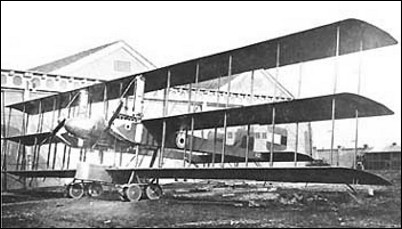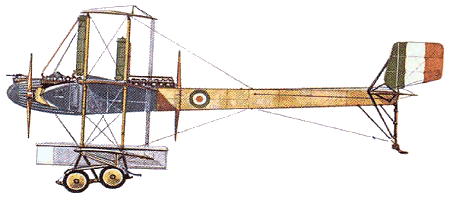 |
Caproni Ca.41917 |  |
| BOMBER | Virtual Aircraft Museum / Italy / Caproni |
 |
A number of these sizeable triplane bombers flew operationally over northern Italy during 1918. They were impressive not only in flight - with their three equal-span wings and their multiplicity of struts and wires - but also in the construction techniques employed. Power was supplied by three engines, early aircraft having 223.6kW Fiat A.12s or Isotta Fraschini V.5s, while later machines had 298kW American Liberties. One engine was mounted to drive a pusher propeller at the rear of the central crew nacelle; the other two were tractor-mounted in front of the middle wing leading edge in the noses of the twin booms (each with a midships gunner's cockpit) which extended to the rear to support the tailplane. The prototype and the first three production Ca.4s had angular crew nacelles, but all later examples of the Ca.1000HP (its initial designation arising from the total horsepower provided by the prototype's engines) had carefully contoured rounded nacelles. A third gunner's cockpit was located at the front of the nacelle forward of the side-by-side cockpits for the pilot and co-pilot. Max bomb load was 1000kg. Total production of all versions of the Ca.4 was 42. Six of the 23 Liberty-powered Ca.4s built were sold to Britain and used briefly, though not operationally, by the Royal Naval Air Service. One Ca.4 was converted to a seaplane by the substitution of huge twin floats for the land undercarriage. Post-war, the Ca.48 23-passenger conversion made a notable flight from Milan to London in 1919. Another civil conversion for 30 passengers was tested the following year under the designation Ca.58.

|  COMPANY PROFILE | ||||||||||||||||||||||||||||||||
 |

|
 wanshan
wanshan
20
reply